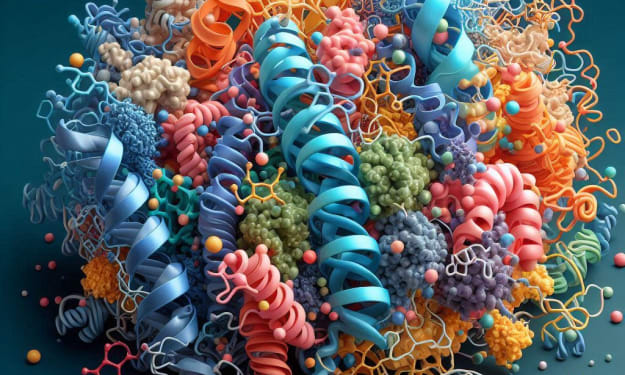The Psychology of Click-Through Rates: How to Write Meta Descriptions that Drive Traffic.
Unlock the secrets behind high click-through rates and learn how to craft compelling meta descriptions that drive traffic to your website.

Understanding the Psychology of Click-Through Rates
Click-through rates (CTRs) are a measure of how many people click on a specific link or advertisement compared to the number of impressions it receives. Understanding the psychology behind CTRs can help you create meta descriptions that entice users to click and drive traffic to your website.
One important aspect of CTRs is the concept of curiosity. Humans are naturally curious creatures, and we are more likely to click on something that piques our curiosity. By crafting meta descriptions that spark curiosity and leave users wanting more, you can increase your click-through rates.
Another psychological factor that influences CTRs is the element of urgency. When people feel a sense of urgency, they are more likely to take immediate action. By incorporating words or phrases that create a sense of urgency in your meta descriptions, such as 'limited time offer' or 'act now,' you can motivate users to click and explore further.
Emotional appeal is also an important aspect of CTRs. Humans are driven by emotions, and we are more likely to engage with content that evokes strong emotions. By tapping into the emotions of your target audience and crafting meta descriptions that elicit those emotions, you can increase the likelihood of users clicking on your links.
Understanding the psychology of click-through rates is crucial for writing effective meta descriptions that drive traffic to your website. By leveraging curiosity, urgency, and emotional appeal, you can create compelling meta descriptions that entice users to click and explore your content.
Elements of a Highly Effective Meta Description
A highly effective meta description consists of several key elements that can capture the attention of users and encourage them to click on your link. These elements include:
1. Relevant and concise summary: A meta description should provide a concise summary of the content on the linked page. It should accurately describe what users can expect to find when they click on the link.
2. Unique selling proposition: Your meta description should highlight the unique aspects of your content or offer. What sets it apart from other similar options? Why should users choose your link over others?
3. Clear call-to-action: A strong call-to-action can motivate users to take the desired action. Use action verbs and compelling language to encourage users to click on your link.
4. Keywords: Incorporating relevant keywords in your meta description can help improve its visibility in search engine results. However, make sure the keywords flow naturally and don't appear spammy.
By incorporating these elements into your meta descriptions, you can increase the likelihood of users clicking on your links and driving traffic to your website.
Tips for Writing Meta Descriptions that Stand Out
Writing meta descriptions that stand out from the competition can be challenging, but with the right approach, you can create compelling descriptions that capture users' attention. Here are some tips to help you write meta descriptions that stand out:
1. Know your audience: Understand the needs, preferences, and pain points of your target audience. Tailor your meta descriptions to resonate with them and address their specific concerns.
2. Use compelling language: Choose strong and persuasive words that evoke emotion and create a sense of urgency. Words like 'discover,' 'uncover,' 'exclusive,' and 'limited time' can grab users' attention and motivate them to click.
3. Highlight unique features or benefits: Identify the unique features or benefits of your content or offer and highlight them in your meta descriptions. What makes your content valuable or different from others?
4. Keep it concise: Meta descriptions should ideally be between 50-160 characters to ensure they are displayed properly in search engine results. Make every word count and convey the essence of your content in a concise manner.
5. Test and analyze: Experiment with different meta descriptions and analyze their performance. Pay attention to click-through rates and adjust your descriptions based on the insights you gather.
By implementing these tips, you can create meta descriptions that stand out, attract users' attention, and drive traffic to your website.
Utilizing Keywords and Call-to-Actions in Meta Descriptions
Keywords and call-to-actions (CTAs) are essential components of effective meta descriptions. By utilizing keywords and CTAs strategically, you can optimize your meta descriptions for search engine visibility and encourage users to click on your links.
When incorporating keywords in your meta descriptions, make sure they are relevant to the content on the linked page and flow naturally within the description. Avoid keyword stuffing, as it can negatively impact your search engine rankings.
In addition to keywords, including a clear and compelling call-to-action can motivate users to take the desired action. Use action-oriented language and specific instructions to guide users towards clicking on your link. For example, 'Learn more,' 'Get started today,' or 'Download now.'
By effectively utilizing keywords and CTAs in your meta descriptions, you can improve your search engine visibility and increase the click-through rates of your links.
Measuring and Analyzing the Impact of Your Meta Descriptions
Measuring and analyzing the impact of your meta descriptions is crucial for optimizing your click-through rates and improving the performance of your links. Here are some methods to measure and analyze the impact of your meta descriptions:
1. Track click-through rates: Monitor the click-through rates of your links in search engine results pages. Tools like Google Analytics can provide valuable insights into the performance of your meta descriptions.
2. A/B testing: Conduct A/B tests by creating multiple versions of your meta descriptions and measuring their performance. Compare the click-through rates of different descriptions to identify the most effective ones.
3. Analyze user behavior: Analyze user behavior on your website after they click on your links. Are they staying on your site, exploring further, or bouncing back? Understanding user behavior can help you refine your meta descriptions to attract more qualified traffic.
4. Stay updated with SEO best practices: Keep yourself updated with the latest SEO trends and best practices. Search engine algorithms are constantly evolving, and staying informed can help you optimize your meta descriptions for better performance.
By consistently measuring and analyzing the impact of your meta descriptions, you can make data-driven decisions to improve your click-through rates and drive more traffic to your website.
About the Creator
Enjoyed the story? Support the Creator.
Subscribe for free to receive all their stories in your feed. You could also pledge your support or give them a one-off tip, letting them know you appreciate their work.






Comments
There are no comments for this story
Be the first to respond and start the conversation.